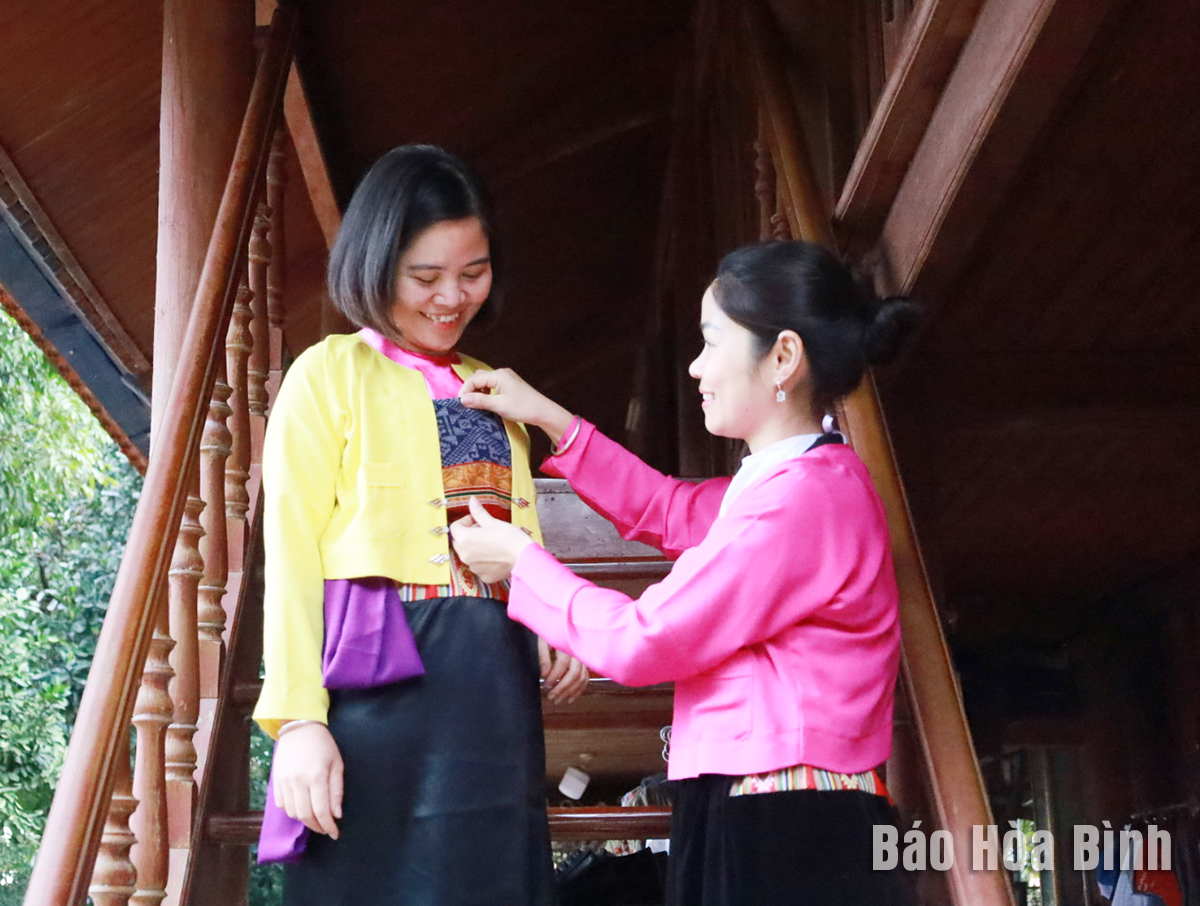The clothing of women reflects the culture of the Muong, Thai, Tay, Dao, and Mong ethnic groups in the northern province of Hoa Binh.
Today,
Muong ethnic clothing is still well preserved.
At
many events such as street drum parades, carnival festivals, and celebrations
in the province and across the country, costumes of ethnic minority groups are
honoured and become impressive highlights.
The beauty and uniqueness of Muong costumes are particularly evident in the
traditional outfits of Muong women. Muong women typically wear two types of
shirts: short and long. The short shirt is worn daily, featuring a body that is
short and open at the chest, without buttons; the collar is round, and the
sleeves are fitted and long. These shirts are usually made of common fabric or
silk, and often in white.
The long shirt is primarily worn for receiving guests or during festivals and
celebrations. It usually reaches the knee and is often made from lightweight,
and colourful fabrics. The skirt of Muong women consists of two main parts: the
waistband, which goes from the hips upwards, and the skirt body, which flows
down to the ankle. The unique and elegant beauty of the Muong skirt focuses on
the waistband, intricately woven and embroidered with harmonious colours and
patterns. The traditional one consists of three strips of brocade with
different patterns. The upper part is about 10cm wide and is decorated with
red, yellow, and brown threads interspersed with stylised floral designs. The
complete outfit includes shoes, a belt, an apron, a headscarf, and jewelry.
Thai women's clothing includes a short shirt, a long shirt, a skirt, a
headscarf, and jewelry. The short shirt comes in various colours like blue, red,
white, and purple, featuring a round neckline with a small trim. The body of
the shirt is 25-30 cm long, with fitted sleeves; when worn, the hem is tucked
into the skirt waistband and secured with a belt to prevent it from slipping.
The long shirt is usually dark blue or black, reaching down to the knee, open
at the chest, without buttons, and worn only in cold weather, secured with a
wide white fabric belt about 20 cm wide.
The clothing of Tay women includes a buttoned short shirt, an unbuttoned short
shirt, a apron, a long shirt, a skirt, a headscarf, a belt, and jewelry. The
unique feature of the short shirt is that its hem is level with the waistband,
with a round collar and an open chest, adorned with two rows of silver buttons
shaped like butterflies or cicadas from the collar down to the skirt waistband.
The short shirt often feature an odd number of buttons.
In Hoa Binh, there are two Dao groups - Dao tien and Dao quan chet, resulting
in diverse clothing styles. The female clothing of the Dao quan chet group
includes a long shirt, a headscarf, trousers (tight-fitting and made from black
fabric), and leg wraps (white, wrapped from the bottom up, covering the trouser
hem). The clothing of Dao tien women is elaborate and unique, often accompanied
by a net bag, necklaces, bracelets, and earrings.
Meanwhile, the costumes of Mong women in Hang Kia and Pa Co are similar to that
of Mong women in northern provinces. Mong women's skirt is cone-shaped with
dense pleated, narrow at the top, and wide at the bottom, made from a single
piece of fabric shaped like an open crown. When worn, the skirt is wrapped
around the waist and secured with a fabric belt. A large apron, about 30 cm
wide and 15 cm longer than the skirt, is worn on the front, tied behind the
waist with two 10-cm-wide strips that hang down to the skirt hem. Dark blue,
green, and red are the predominant colors in Mong women's clothing.
The clothing of women from ethnic groups is increasingly being adapted to fit
their daily lives and work. Currently, among the Muong people, wearing
traditional clothing has decreased compared to the past, but it remains
important during festivals and celebrations. In some areas of the province,
local authorities have encouraged the wearing of ethnic costumes. This is
essential and should be promoted as part of the integration process.



